What is Fiber Analysis All About?
Crude fiber analysis in feed is different from dietary fiber analysis in food. Dietary fiber includes both the soluble and insoluble portions of plant-based foods, while crude fiber is the insoluble portion of the cell wall of plants. Crude fiber describes the plant cell wall components (including cellulose, hemicellulose, lignin), which are not digestible, and thus the portion of the feed that is not energetically usable by animals. Even though it cannot be digested, it is important to measure for the health of the animal. Crude fiber stimulates digestion and is critical to animal gut health.
What Do We Consider Crude Fiber?
Crude fiber is the indigestible component of feed from the plant cell wall. There are three major segments in plant cell walls that are considered fiber:
- Cellulose
- Hemicellulose
- Lignin
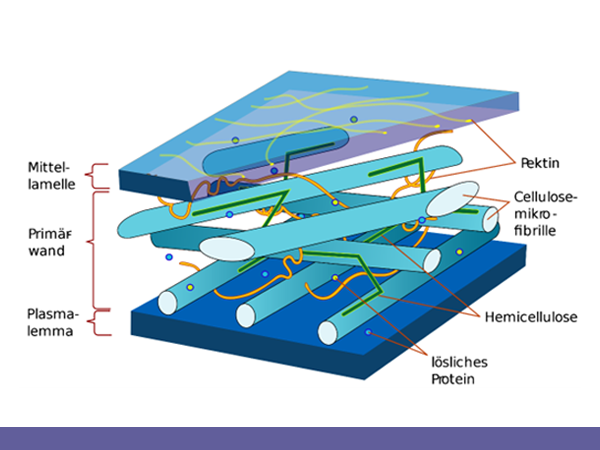
Schematic of a plant cell wall
Above is a schematic of a plant cell wall, and you can already notice the complicated network of the components: pectin, cellulose, microfibrils, hemicellulose, proteins, starch, etc. The variety of these components is what offers the challenge we must solve in our fiber analysis. We need to break this network to dissolve and remove all components out of the plant sample not considered fiber so that only our fiber components remain. To remove our non-fiber components, we can adjust the run time, detergent choice (acid or alkaline chemical) and even the detergent order.
Example Sample:
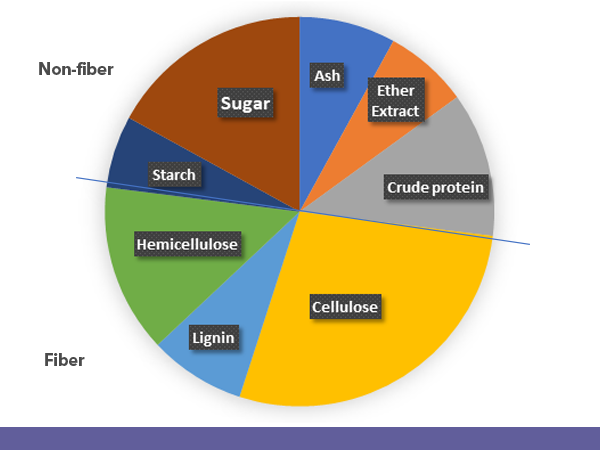
Components of an example sample
The pie diagram above shows all the components of an example sample. Everything above the blue line are non-fiber components that must be removed during the process. Everything underneath this line are the fiber components we want to weigh out at the end. We will now go through each piece of the non-fiber components and how we remove these pieces from the pie so that all that remains is fiber.
Ether Extract
You remove this piece in the sample preparation process by degreasing your sample. The table below shows the percent of fat and recommendation for degreasing the sample.
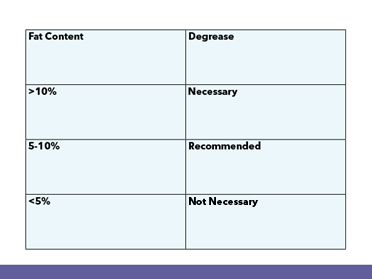
A degreasing module such as our beaker and a six-position carousel are a simple way to degrease your sample. The carousel perfectly fits inside the beaker, so you only need 100 milliliters of petroleum ether or any other suitable organic solvent. The goal is to spin the carousel in the solvent to reduce the fat content, not remove all the fat.
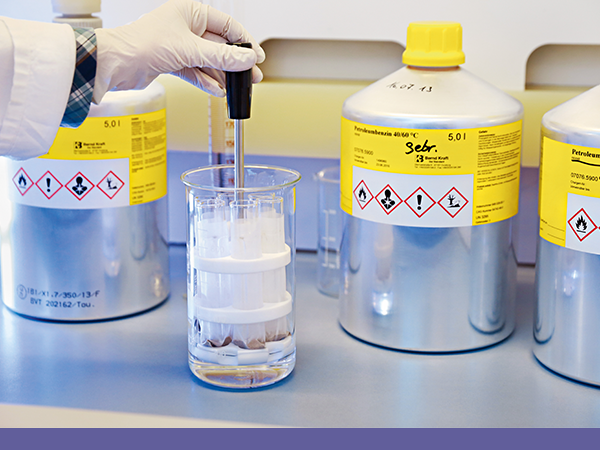
Starch/Sugar/Crude Protein
You can remove starch, sugar, and crude protein simultaneously with detergents used in the crude fiber analysis—sulfuric acid in the first step and potassium or sodium hydroxide in the second. The starch/sugar/crude protein goes in solution, so it dissolves during this treatment, and you remove it from the filter.
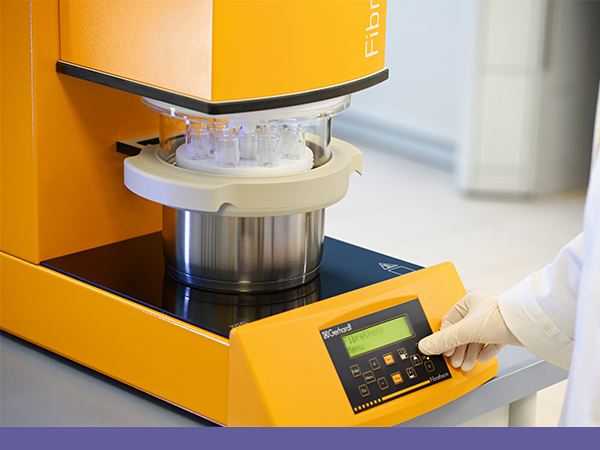
Ash
Now we only have ash and fiber left in the filter as solids. If we incinerate our sample at 500 degrees Celsius, everything that leaves the crucible is fiber. By differential weighing, we can calculate how much fiber we had in our filter bags.
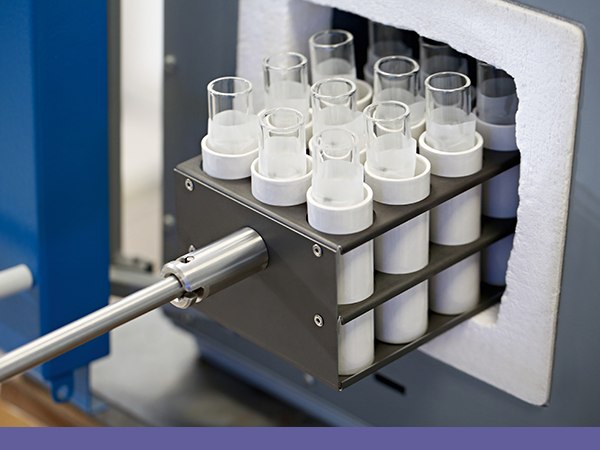
Crude Fiber vs ADF vs ADL vs NDF
Although crude fiber is the most common measurement, it does not give you precise information about the different segments in your sample. You might think that if you do a crude fiber analysis, you get the sum/total of all fiber components, but in fact, that is not the case. In the process of crude fiber analysis, some of the hemicellulose and cellulose parts are not fully dissolved, depending on the sample type and the fiber content of your sample.
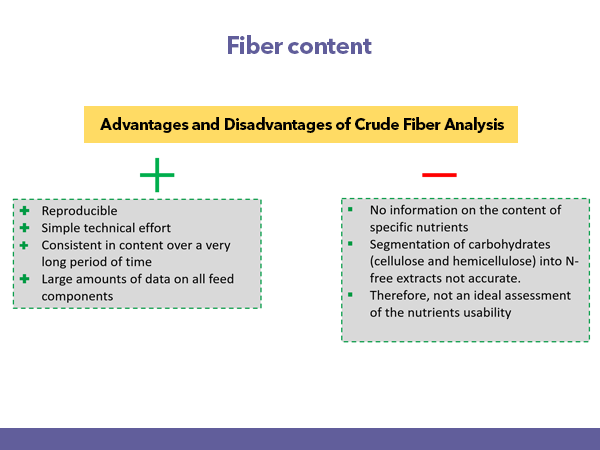
If you analyze the same sample with a standardized method, you can compare the crude fiber values. However, determining the exact breakdown of hemicellulose, cellulose, and lignin is not possible. ADF, NDF, and ADL methods allow you to get more information about these components using the Van Soest method. The Van Soest method was developed in the 1960's for a more comprehensive feed analysis. It is a wet chemical method that uses specific detergents to divide the plant cell walls into less digestible (hemicellulose, cellulose and lignin) and highly digestible cell contents (starch and sugars).
Van Soest Method
NDF (Neutral Detergent Fiber)
Neutral Detergent Fiber determination is an extended crude fiber analysis which gives you additional information about the different segmentations that you have in your sample invented by Van Soest. The sample is treated for 60 minutes in a neutral detergent together with alpha amylase to remove the starch. At the end of this process, you get all the fiber components since the hemicellulose and cellulose parts are dissolved.
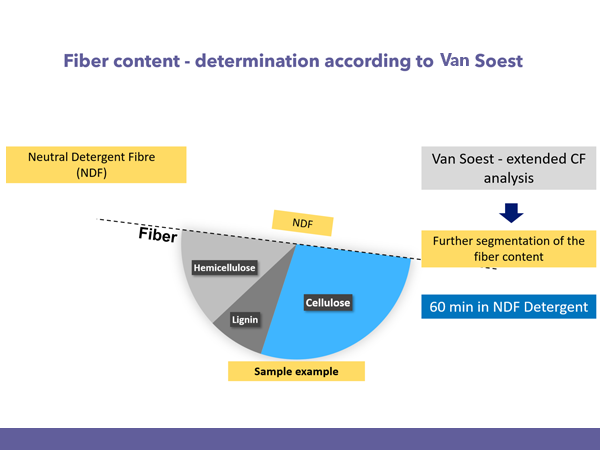
ADF (Acid Detergent Fiber)
Acid Detergent Fiber is where you treat your sample with a slightly acidic detergent to allow removal of the hemicellulose. Now that we have the NDF value and the ADF value, we can calculate how much hemicellulose we had in our sample by simply subtracting both values from each other.
ADL (Acid Detergent Lignin)
To determine the acid detergent lignin we must treat our samples for 60 minutes in the ADF solution followed by several hours in concentrated sulfuric acid, this removes the cellulose parts leaving only lignin. If we have all three of these values, we can calculate each segment of fiber.
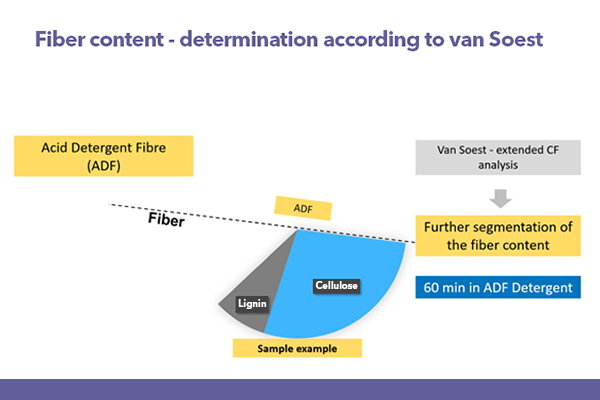
Comparison Example of values Crude Fiber-NDF-ADF in feed for dairy cows
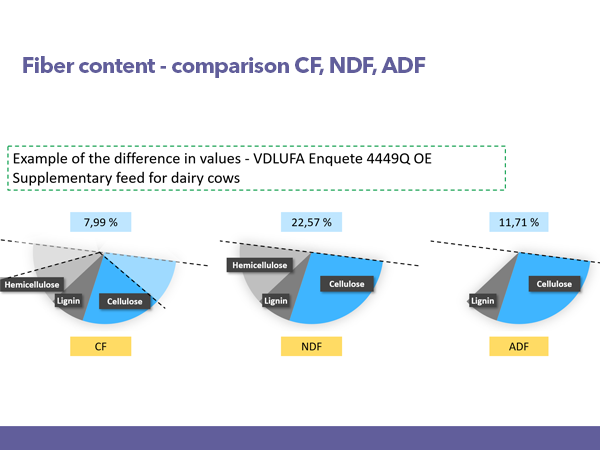
The expectation is that crude fiber may be one of the highest values, but in the case above, crude fiber has the lowest value compared to NDF and ADF. This demonstrates that a large amount of the hemicellulose and cellulose parts are not dissolved in the process. NDF has the highest value at 22.57% and ADF 11.71%, which is expected. NDF should have a value higher than the ADF value because everything that is part of the ADF value is also part of the NDF value plus hemicellulose. If the ADF value is higher than the NDF value, that indicates that something went wrong in your process.
Filtration
Filtration plays a significant role in this whole process. The glass crucibles described in many methods change their porosity due to the temperature and chemicals used. Other filter systems must be sealed and are not uniform. When the porosity changes or is not consistent, you will have a higher error since you will lose more of the particles that are considered fiber.
The FIBREBAG technology used in the FIBRETHERM removes this error source. The FIBERBAG technology is a textile fabric with a very defined mesh size that standardizes the filtration so that you always have the same filtration, therefore the same porosity for each sample. It does not depend on the lifetime of the crucible or which crucible you use. The FIBREBAG is open, which simplifies the weighing process and allows a better flowthrough of the detergent and better interaction. It is important to wash out all the components that we want to remove from our sample.
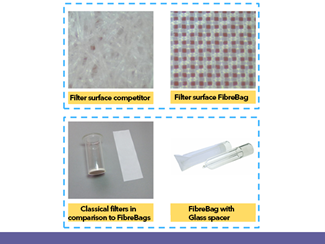
What Parameters Are Critical?
Sample preparation is extremely important. Starting with a homogeneous sample with a particle size of 1 millimeter (referenced in methods) is necessary. Additional parameters that have an influence include particle size, the temperature and the drying time, the weighing process, the ratio between the sample amount and the detergent quantity, the concentration of the detergents, the cooking times, and the filtration.
Standardization is key when it comes to fiber analysis and the FIBRETHERM can help.
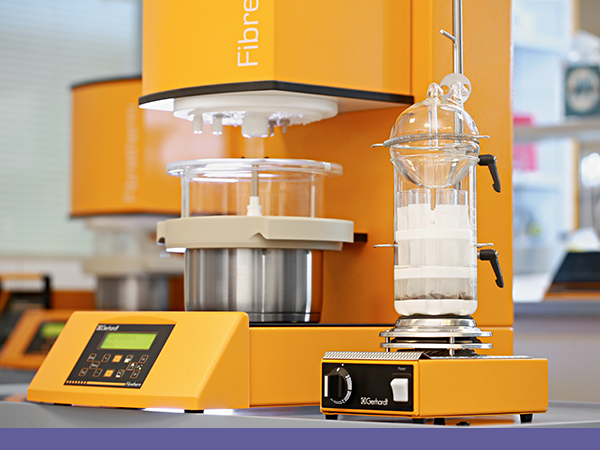
Benefits of Using the FIBRETHERM for Your Feed Analysis
The FIBRETHERM is an automatic system that takes care of all the necessary processes during the detergent treatment. The boiling, washing, and filtration are combined in one system, saving time. The liquid jets allow for a consistent addition and process. The FIBREBAG technology offers consistent pore size, reproducibility, and analytical conditions to ensure a standardized method. The system is entirely closed to prevent contact with chemicals, which can be stored underneath the FIBRETHERM with a fill sensor. The control unit is easy to operate and offers full-time monitoring on twelve samples simultaneously.
Learn all about mastering fiber analysis with the FIBRETHERM in our recorded webinar: Master Fiber Analysis with FIBRETHERM | ysi.com